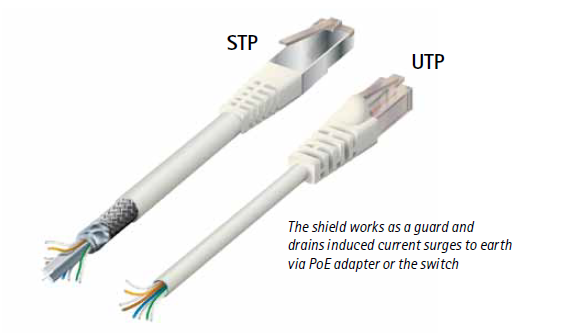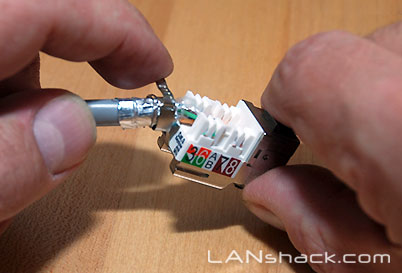The use of shielded category Ethernet cable for IP Video
It comes up from time to time from customers and vendors when and where to use shielded category twisted pair cable for Ethernet. Most vendors hate it. It’s hard to terminate, doesn’t flex well and nobody ever seems to agree on how it should be grounded. For the most part, it wasn’t much of a problem for CAT3 or even CAT5 cable. But with higher and higher bandwidth (and thus frequency) demands on the cable, using CAT6A cable in certain environments for network applications becomes important. And while there’s a decent argument for why you may not need CAT6A cable for IP video (see this article for more information), many of our clients are using it as a corporate standard, regardless of the application.
Although CAT6 cables have improved the cable twist to handle gigabit Ethernet and reject noise, this by itself is not enough for environments that have high electromagnetic interference (EMI). What is EMI? Think of EMI as gremlins that are trying to attack the signal of your network cable. EMI is generated as electromagnetic waves in the radio frequency (RF) spectrum, and can come from many sources. The most logical is an RF transmitter, like a radio station tower or even HAM radio antenna; but other sources can be harder to spot, such as a nearby computer, high voltage power lines, a leaky transformer, or fluorescent light fixture that’s going bad. Running network cables in your ceiling or plenum space could potentially put these cables near those kinds of sources, and thus introducing the gremlins to degrade or even interrupt communications over the Ethernet network cable. Since Ethernet is a collision based network strategy, this usually looks like a slow connection, as the network repeatedly keeps re-transmitting packets that were found to be in error. Result, poor network performance and potentially bad video.
Most people are familiar with UTP cable (Unshielded Twisted Pair), versus STP (Shielded Twisted Pair), and UTP is commonly used in CAT5e cabling that is predominant for gigabit Ethernet networking in most commercial and residential applications. STP cables have an additional metallic braid that forms a sort of shield (google “Faraday shield” for how it works) around the conductors, and reduces the amount of interference that can be injected into the cable. Still, both types of conductors (STP and UTP) have one thing in common, the twisted pair, that by itself reduces interference by its inherent design.

Photo courtesy of Axis Communications.
The drawback of STP cables is that they increase the total cost of the installation. STP cables are more expensive due to the shielding (and usually are higher quality), which is an additional material that goes into every foot of the cable. The shielding also makes the cable heavier and stiffer. Thus, it is more difficult to handle during installation (pulling cable over long distances through a conduit is hard enough with flexible cable).
While most installations can be done effectively using UTP cable, we recommend using STP cable for high EMI environments like manufacturing, laboratory, or research facilities where other high energy or RF generating devices may be in use. Also, if you’re forced to run category cable in a cable tray that’s shared with power conductors (low or medium voltage), use STP cable even though the cable tray is separated and may have it’s own shielding for the power conductors. It is also highly recommended to use an STP cable where the camera is installed outdoors or where the network cable is routed outdoors.
Oh, and what to do with that drain wire? Our suggestion is to use some of the pre-fabricated shielded keystone jacks like this one.

Posted in: IP Video
Leave a Comment (0) ↓